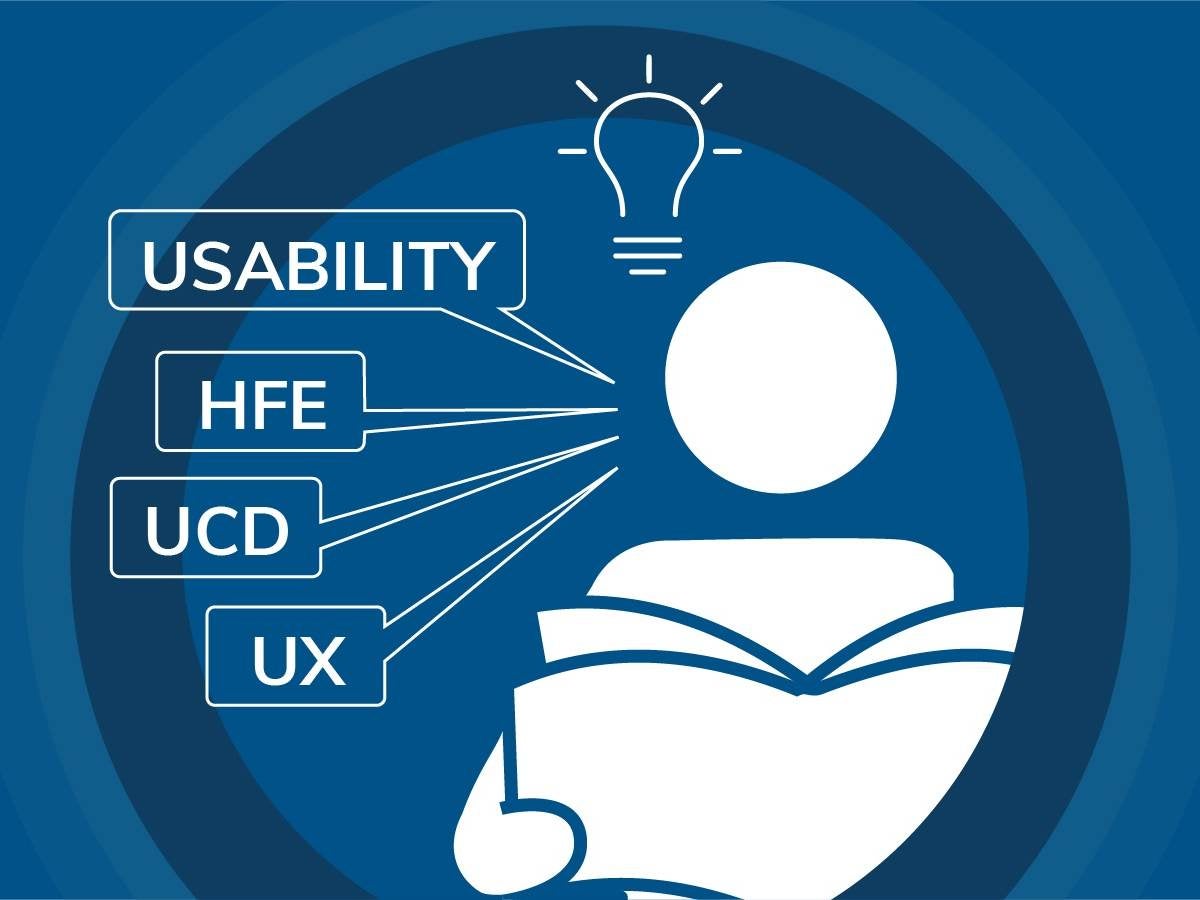February 17, 2020
When learning about new areas of work, understanding the important terms and their relation to one another is a great start. Medical device human factors and design fields are no different. While we could go through all the terms, let’s hone in on the four main terms that are sometimes difficult to fully distinguish from each other: human factors, user-centered design, user experience, and usability.
Human factors
Human factors, or human factors engineering, is about applying knowledge of human capabilities, behaviors, and limitations, be it physical, sensory, emotional, or cognitive, to product design and development. Human factors, in terms of medical devices, ultimately aims to reduce use-related risks and validate that devices can be used safely and effectively. This is why the U.S. Food and Drug Administration (FDA) has created guidance to make sure companies are aiming for similar standards with a focus on usability, effectiveness, and safety.
User-centered design (UCD)
User-centered design (UCD), also referred to as human-centered design, is a design process. This process examines a deep understanding of the user’s interaction with the product, such as task, environment, goals, needs and limitations. Gaining this understanding of interactions requires the user to be incorporated at every stage of development, either through formative studies or focus groups. Successful evaluations will encourage iterations to the product until UCD’s goal is reached. The goal of this process is to achieve a highly usable product, which in other words means a positive user experience.
User experience (UX)
User experience (UX) is a broad term covering several disciplines that study the effect of design on the ease of use and level of satisfaction with a product, site or system). While the term is usually closely linked to digital products, it is also a factor in physical products. Well-respected design researcher Don Norman describes the user experience this way:
“It is a cohesive, integrated set of experiences. Think through all of the stages of a product or service – from initial intentions through final reflections, from first usage to help, service, and maintenance. Make them all work together seamlessly.”
However, describing this in such an all-encompassing manner makes it a bit difficult to reconcile other legitimate terms and disciplines, so let’s narrow it down a bit more.
What contributes to UX? If you think back to any time you had to download something on your phone but the process frustrated you, was your reaction to not bother with downloading? Did you curse at your phone and step away from the situation until the download was complete? That is an example of how important the UX is. Successful design evokes an emotional response (presumably positive) from the user, generally from meaningful and relevant experiences. UX, as a technique or methodology can then focus on measuring and understanding this experience. These responses should not only be from the initial interaction, but from general use, trouble shooting, and owning the product or system. All tasks, in relation to UX, should be evaluated throughout development. In regards to safety and proper product use, use-error, and risks of physical harm become major components of the user experience of medical products.
Usability
Usability, the last term we will consider, is similar to UX in that it describes a quality, or result. The ISO 9241 Ergonomics of Human System Interaction standard defines usability as an essential characteristic of a product:
“The extent to which a product can be used by specified users to achieve specified goals, with effectiveness, efficiency and satisfaction in a specified context of use.”
This does not mean that usability is only about ease of use, but also the ease of learning how to interact with the product through satisfaction of use. Usability and UX are assessed by observing actual users attempt to complete their goals using the user interface. This does not mean assessing whether or not a candidate completes a task, but also how they complete the tasks. Do they repeatedly have to go back to directions? Do they look confused or ask questions to the assessor? Or do they complete the tasks incorrectly or in a potentially harmful way?
In retrospect, and not surprisingly, every one of these terms is about the user. Each embodies different ways the user should be included in development. Due to their intricate crossovers, these terms can easily be confused but they do have specific meanings. Here are ways to remember the terminology:
- Human factors is about applying the understanding of human capabilities and limitations on all levels of interaction.
- UCD is the method or process of incorporating users into the design process.
- UX is the emotional response and/or connection you are striving to achieve between the user and the product.
- Usability is the characteristics of the product’s interface that establishes effectiveness, efficiency, and ease of learning and user satisfaction (ISO/IEC 62366:2007, Definition 3.17)
After deconstructing the terminology here, the terms share some common threads, but while the general idea of evaluating a product is similar, there is no ‘one-size fits all’ approach. For best results, review your product, its purpose, and relationship to the user to determine the best approach with your development team and/or specialists in human factors and design. Regardless of which term you might be more familiar with, or applies more directly to your job title and/or education, consider the nuances and implications of each term. Doing so will help lead you toward a more complete and thorough process, and a reliable means for evaluating all of the user-facing elements of the design.
Jacqueline Edwards is User Interface Design Associate at Emergo by UL’s Human Factors Research & Design division.
Additional medical device human factors engineering and usability resources:
Request more information from our specialist
Thanks for your interest in our products and services. Let's collect some information so we can connect you with the right person.







